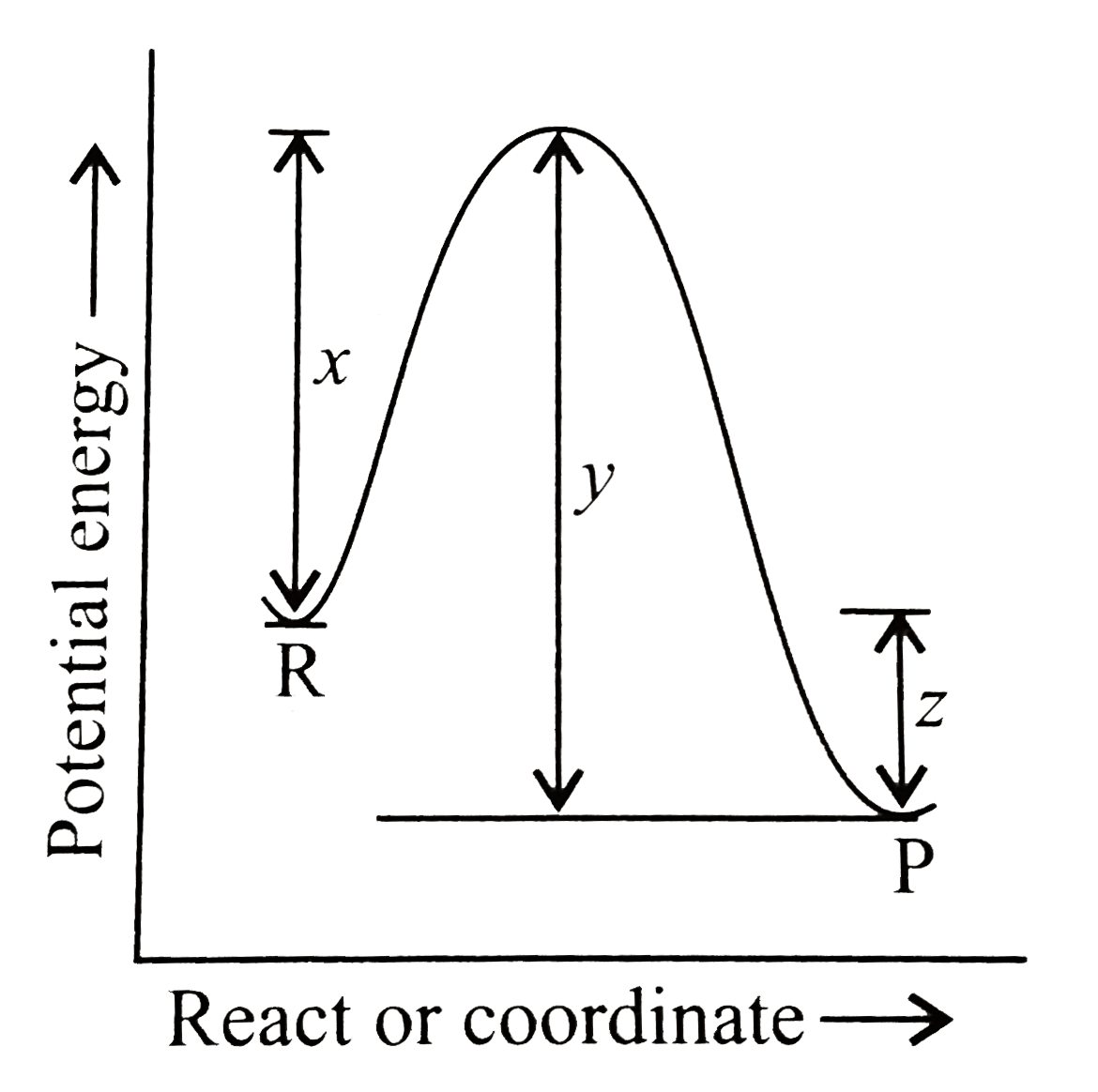A large positive value of ΔGɵ corresponds to which of these?
Small positive K
Small negative K
Large positive K
Large negative K
The correct Answer is:A
To determine the significance of a large positive value of ΔG° (Gibbs free energy change at standard conditions), we can analyze the relationship between ΔG° and the equilibrium constant (K_eq).
1. Understand the Relationship: The relationship between ΔG° and K_eq is given by the equation:
ΔG∘=−RTlnKeq
where R is the universal gas constant and T is the temperature in Kelvin.
2. Analyze the Equation:
- If K_eq is greater than 1, then ln K_eq is positive, making ΔG° negative. This indicates that the reaction favors the formation of products.
- If K_eq is equal to 1, then ln K_eq is zero, and ΔG° is zero, indicating that the system is at equilibrium.
- If K_eq is less than 1, then ln K_eq is negative, making ΔG° positive. This indicates that the reaction favors the formation of reactants.
3. Large Positive ΔG°: A large positive value of ΔG° indicates that the reaction strongly favors the reactants over the products. This corresponds to a very small value of K_eq.
4. Conclusion: Therefore, a large positive value of ΔG° corresponds to a small positive value of K_eq.
Final Answer:
A large positive value of ΔG° corresponds to a small positive value of K_eq.
ΔG∘=−RTlnKeq
where R is the universal gas constant and T is the temperature in Kelvin.
- If K_eq is greater than 1, then ln K_eq is positive, making ΔG° negative. This indicates that the reaction favors the formation of products.
- If K_eq is equal to 1, then ln K_eq is zero, and ΔG° is zero, indicating that the system is at equilibrium.
- If K_eq is less than 1, then ln K_eq is negative, making ΔG° positive. This indicates that the reaction favors the formation of reactants.
A large positive value of ΔG° corresponds to a small positive value of K_eq.
Topper's Solved these Questions
- CHEMICAL EQUILIBRIUMBOOK - CENGAGE CHEMISTRY ENGLISHCHAPTER - CHEMICAL EQUILIBRIUMEXERCISE - Concept Applicationexercise 7.1
53 Videos
- CHEMICAL EQUILIBRIUMBOOK - CENGAGE CHEMISTRY ENGLISHCHAPTER - CHEMICAL EQUILIBRIUMEXERCISE - Ex 7.2
40 Videos
- CHEMICAL BONDING AND MOLECULAR STRUCTUREBOOK - CENGAGE CHEMISTRY ENGLISHCHAPTER - CHEMICAL BONDING AND MOLECULAR STRUCTUREEXERCISE - Archives Subjective
15 Videos
- CLASSIFICATION AND NOMENCLATURE OF ORGANIC COMPOUNDSBOOK - CENGAGE CHEMISTRY ENGLISHCHAPTER - CLASSIFICATION AND NOMENCLATURE OF ORGANIC COMPOUNDSEXERCISE - Analytical and Descriptive Type
3 Videos
Similar Questions
Knowledge Check
The absolute temperature value that corresponds to 27∘C is
A200 KB300 KC400 KD246 K
Which has/have a positive value of ΔH?
View SolutionGiven below are the values of ΔHɵ and ΔSɵ for the reaction given below at 27∘C.
SO2(g)+12O2(g)→SO3(g)
ΔHɵ=−98.32kJmol−1,ΔSɵ=−95Jmol−1
Find Kp for the reaction
View SolutionThe potential energy diagram for a reaction R→P is given below. ΔHɵ of the reaction corresponds to the energy

View SolutionDependence of Spontaneity on Temperature:
For a process to be spontaneous , at constant temperature and pressure , there must be decrease in free energy of the system in the direction of the process , i.e. ΔGP.T<0.ΔGP.T=0 implies the equilibrium condition and ΔGP.T>0 corresponds to non- spontaneity.
Gibbs- Helmholtz equation relates the free energy change to the enthalpy and entropy changes of the process as : ΔGP.T=ΔH−TΔS ...(1)
The magnitude of ΔH does not change much with the change in temperature but the entropy factor TΔS change appreciably . Thus, spontaneity of a process depends very much on temperature.
For endothermic process, both ΔH and ΔS are positive . The energy factor, the first factor of equation, opposes the spontaneity whereas entorpy factor favours it. At low temperature the favourable factor TΔS will be small and may be less than ΔH,ΔG will have positive value indicated the nonspontaneity of the process. On raising temperature , the factor TΔS Increases appreciably and when it exceeds ΔH,ΔG would become negative and the process would be spontaneous .
For an expthermic process, both ΔH and ΔS would be negative . In this case the first factor of eq.1 favours the spontaneity whereas the second factor opposes it. At high temperature , when TΔS>ΔH,ΔG will have positive value, showing thereby the non-spontaneity fo the process . However , on decreasing temperature , the factor ,TΔS decreases rapidly and when TΔS<ΔH,ΔG becomes negative and the process occurs spontaneously. Thus , an exothermic process may be spontaneous at low temperature and non-spontaneous at high temperature.
A reaction has a value of ΔH=−40Kcal at 400 k cal mol−1. The reaction is spontaneous, below this temperature , it is not . The values fo ΔG and ΔS at 400 k are respectively
View SolutionThe potential energy of a particle in a certain field has the form U=(a/r2)−(b/r) , where a and b are positive constants and r is the distance from the centre of the field. Find the value of r0 corresponding to the equilibrium position of the particle, examine whether this position is stable.
View SolutionThe value of ΔGɵ for the phosphorylation of glycose in glycolysis is 13.8kJmol−1. Find the value of Kc at 298K
View SolutionThe value of ΔGɵ for the phosphorylation of glycose in glycolysis is 13.8kJmol−1. Find the value of Kc at 298K
View Solution
